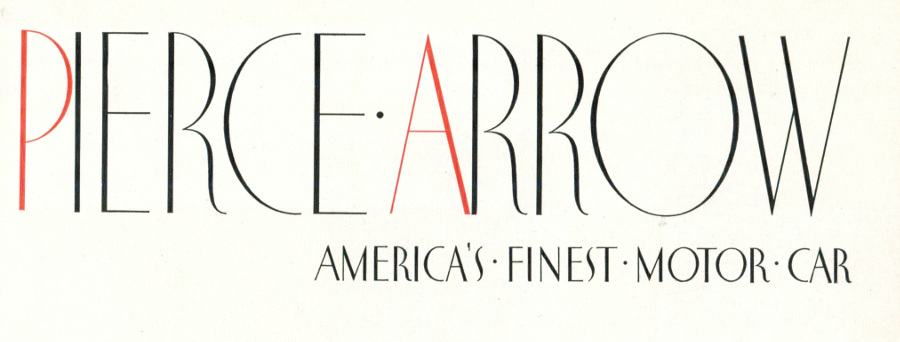By Robert Tate, Automotive Historian/Researcher
Images Courtesy of the National Automotive History Collection
Published 10.13.2014
As we look back over the early days of our automotive heritage, we admire the Pierce-Arrow automobile as a unique and fascinating vehicle. The vehicles were manufactured from 1901 through 1938 in Buffalo, New York. Ironically, the Pierce-Arrow journey began with the production of bicycles in the late 1890s, followed by light cars produced and powered by Dion-Bouton engines shortly after.

Their automobiles were known as ‘Motorettes.’ Advertised as “A Motorette Runnabout,” this model sold for $1,275, which was considered expensive at that time. It was an ideal vehicle for anyone looking for great driving adventures traveling to exciting places. The company was organized by George Pierce (1846-1910) of Buffalo, a businessman who built birdcages and ice boxes before he started manufacturing bicycles.

In 1928, Pierce-Arrow merged with Studebaker, which gave the Buffalo firm a much needed investment of capital. This partnership helped to build and launch their exciting new product line of automobiles of 1929. The new automobiles were called the 133 and 143 models, which were in reference to their respective wheelbase measurements in inches.

Albert Erskine, President of Studebaker, became Chairman of the Board at Pierce-Arrow, while Forbes remained President. As a result of this merger, Pierce-Arrow sales were strong in 1929 and paved the way for continued growth in 1930. However, due to the Great Depression, auto sales began to decline as the economy struggled.

The company, however, did have some good news in 1933; the Silver Arrow model show car was introduced to the public on New Year’s Day at the New York Automobile Show. The new model was a streamlined four-door sedan designed by Phil Wright and J. R Hughes. The steel top and its sloping back design was a revolutionary concept in 1933. Known as the “car of the future,” the model was created for the 1933 Chicago World's Fair and was the first of many cars to have a futuristic design. The Silver Arrow was adventurous and ahead of its time.

When I look at the Silver Arrow design, I am often reminded of the Chrysler Airflow designs and the Torpedo body designs that were manufactured in 1941 by General Motors. Between five and 10 Silver Arrow models were produced and are quite rare among automotive collectors today. One of the models was owned by Marquis Donald d'Oyley of Houston Texas. Mr. d’Oyley had purchased the Arrow automobile new in San Francisco in 1933 and had driven the model over 300,000 miles, enjoying every ride.

In the spring of 1933, Studebaker went bankrupt, and the receivers sold off Pierce-Arrow to a group of Buffalo businessmen for $1.5 million. The new owners included Arthur J. Chanter, a former Studebaker employee and Pierce-Arrow vice president since 1928. After the early 1930s, the sales of Pierce-Arrow automobiles quickly started to go downhill. On April 13, 1938, Pierce-Arrow filed for bankruptcy in United States District Court in the city where it all started, Buffalo, NY.
After the bankruptcy, the renowned Pierce-Arrow nameplate was over, marking the end of a truly great American company. The legacy of Pierce-Arrow automobiles will always be remembered, and their visionary design influenced the shape of automobiles to come.
A special thanks to Robert Tate, Automotive Historian and Researcher, for donating the story to the MotorCities Story of the Week program. Photographs are courtesy of the National Automotive History Collection. (Bibliography: Jones, Edgar R. “The Pierce-Arrow Old Days.” 1961. Ward's Automobile Topics. “Yesterday's Car Of The Future.” 1950. Abrom, Arthur G. & Fowler, Perry. “Pierce-Arrow: America's Answer To The Rolls-Royce.”)
For further information on photos please visit http://www.detroitpubliclibrary.org/ or email This email address is being protected from spambots. You need JavaScript enabled to view it.. Please do not republish the story and/or photographs without permission of MotorCities National Heritage Area.
If you have a story that you would like to donate to be featured as a MotorCities Story of the Week, email This email address is being protected from spambots. You need JavaScript enabled to view it..



